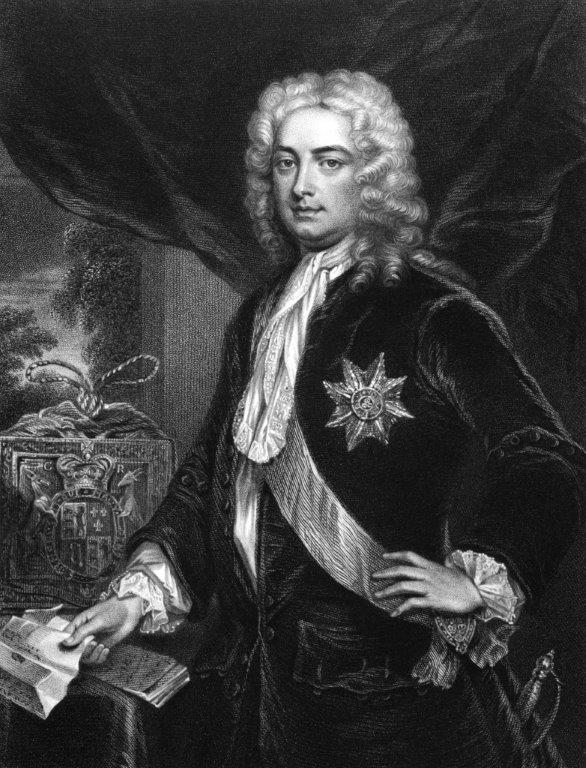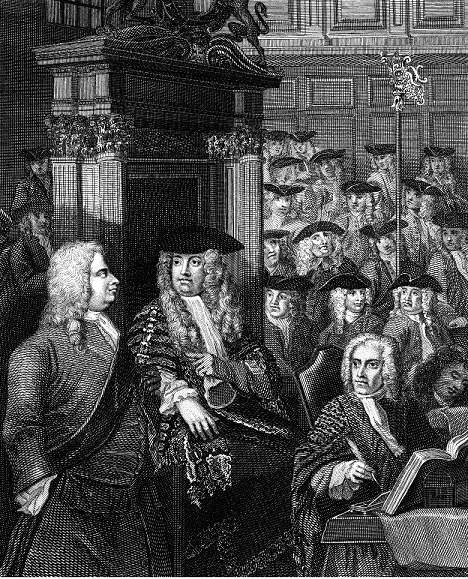This month in history: Sir Robert Walpole becomes Britain's first prime minister
In April 1721, Robert Walpole became what is generally regarded to be Britain’s first de facto prime minister. As part of our ‘This month in history’ series, we look at the life and career of Robert Walpole, Britain’s longest-serving prime minister.

The early life of Robert Walpole
Robert Walpole was born in Houghton, Norfolk, on 26 August 1676. One of 19 siblings, his mother was Mary Burwell, while his father, Robert Walpole, was a landowner and Whig MP for the borough of Castle Rising (Gazette issue 2420).
Having attended Eton, Robert junior studied at King’s College, Cambridge, from April 1696. However, his university education was cut short following the death of his eldest brother Edward in 1698. Now the heir to his family’s estate, Walpole returned to Norfolk to learn how to manage his home.
In 1700, he married Catherine Shorter, the daughter of a wealthy timber merchant. The pair would go on to have five children. In November of the same year, Robert senior died, leaving Robert junior to run the estate of nine manors.
The political career of Robert Walpole
At the age of 25, Walpole won his father’s seat of Castle Rising in the 1701 general election, and in 1702 he secured the seat at King’s Lynn, which he held largely uninterrupted until February 1742.
However, in 1712, Walpole was imprisoned for six months. He had become a political target for the Tories, who had won a landslide election victory in 1710. Walpole was accused of ‘venality and corruption’, as he benefitted from two forage contracts for the army. He was expelled from parliament and sent to the Tower of London, ‘guilty of a high breach of trust and notorious corruption’. During his time in prison, Walpole was visited by notable political figures and became somewhat of a martyr for the Whig party.
Once released, he was quickly re-elected for King’s Lynn in 1713. His political stock would rise in the following years and in 1720 he was made privy councillor and ‘Paymaster-General of His Majesty's Forces’ (Gazette issue 5859).
The first Prime Minister of Great Britain
Following the death of fellow Whig MP James Stanhope and a corruption scandal which led to the resignation of another Whig opponent, Charles Spencer, 3rd earl of Sunderland, Walpole was left as the most important figure in Parliament.
Subsequently, in April 1721, he was appointed First Lord of the Treasury, Chancellor of the Exchequer and Leader of the House of Commons (Gazette issue 5943). Though the term ‘prime minister’ was not widely used at the time, Walpole effectively held the position from this point until 1742, making him the longest serving prime minister in British history.

Robert Walpole and the monarchy
Walpole was the most senior politician in the country during the reigns of George I and George II, and it wasn’t long into his tenure as de facto Prime Minister that Walpole had to use his famed diplomacy skills to defend the credibility of the King and Parliament during the financial crisis caused by the South Sea Bubble (Gazette issue 6080).
Just over a year into his reign, a conspiracy known as the ‘Atterbury Plot’ was discovered. Led by Jacobites, the plot aimed to restore the House of Stuart to the throne. The fallout weakened the Tories and public opinion of Walpole rose. The fallout of the Atterbury Plot was recorded in The Gazette in May 1722 (Gazette issue 6061):
‘Abhorrence of that wicked Conspiracy which several of your Majesty's Subjects, contrary to their Allegiance, have entered into, in Concert with Traitors Abroad, for raising a Rebellion, in favour of a Popish Pretender, and to overthrow our excellent Constitution in Church and State.’
During the final years of George I's reign, Walpole's influence continued to grow. This coincided with the gradual decreasing of the political power of the monarch. In 1725, Walpole persuaded the King to revive the dormant Knight of the Bath (KB) (Gazette issue 6376) and was himself invested with the order before receiving the Knight of the Garter (KG) (Gazette issue 6482) in 1726.
Following the demise of George I in 1727, George II ascended the throne (Gazette issue 6592). The new king and Walpole shared a good relationship and it was in fact George II who gifted Walpole with 10 Downing Street, which has been the permanent London residence of British prime ministers ever since 1735.
The War of Jenkins’ Ear and the decline of Robert Walpole
In his later years, Walpole’s fortunes began to change. His second wife, Maria Skerritt, died three months into their marriage after a miscarriage, and a year later a trade dispute with Spain forced the King to declare the War of Jenkins’ Ear in 1739: 'the British Colours have been insulted in the most ignominious Manner' (Gazette issue 7851).
Public opinion was waning, and this was only compounded by an attempt to raise the excise tax on wine and tobacco, as well as shift tax burdens to merchants instead of landowners. Both were met with huge opposition and, following a poor election result in 1741, Walpole lost a motion of confidence and resigned in February 1742.
Walpole was still in favour with George II, and in the same year he was given the title of 1st earl of Orford. However, just three years later, on 18 March 1745, Sir Robert Walpole died in London, aged 68 years old. He was buried in the parish church of St Martin in Houghton, Norfolk.
See also
This month in history: The Crimean War and the 1856 Treaty of Paris
This month in history: The funeral of Lord Horatio Nelson
This month in history: Edward VIII abdication crisis
Image: Getty Images
Publication date: 3 April 2020
